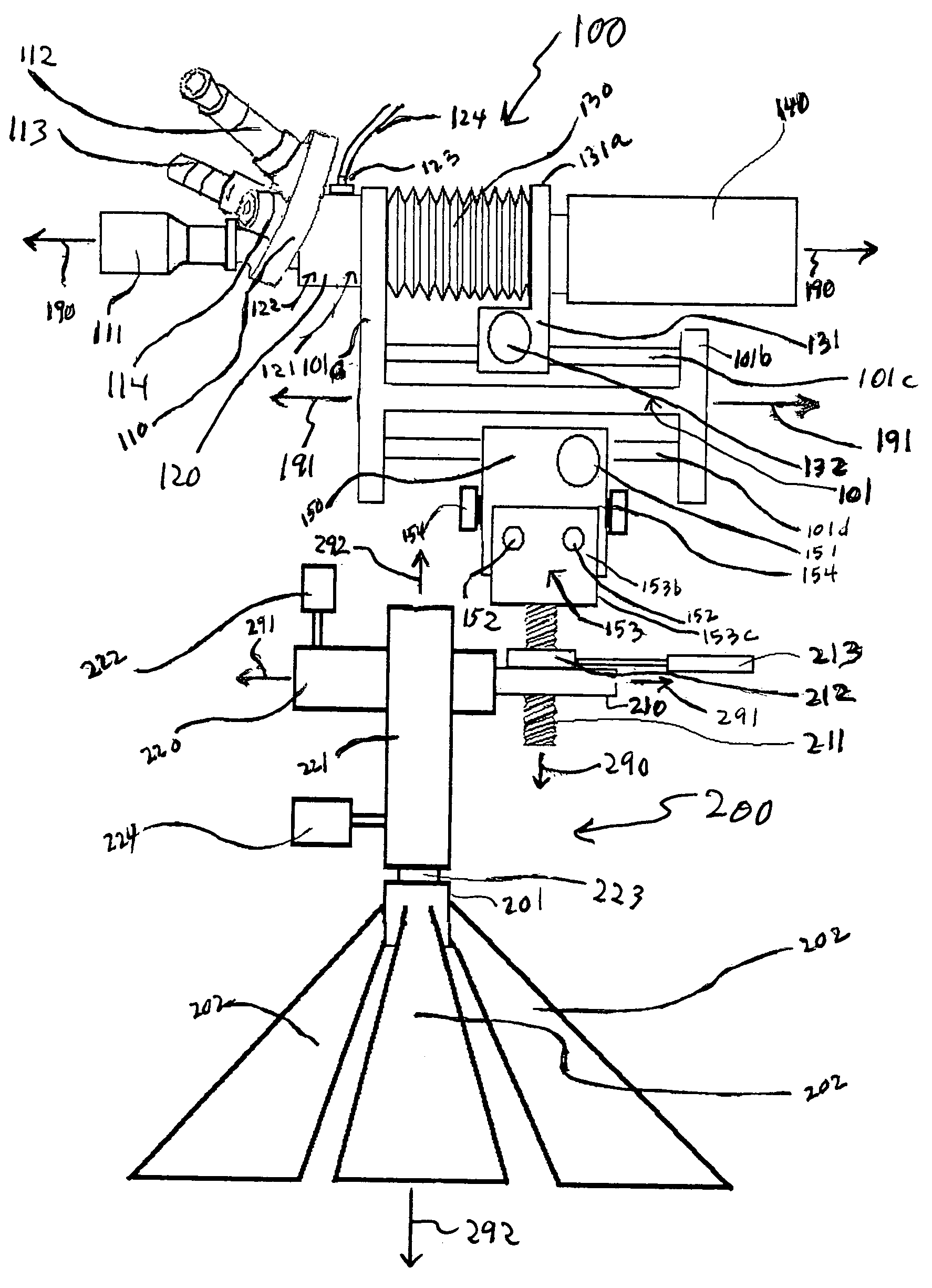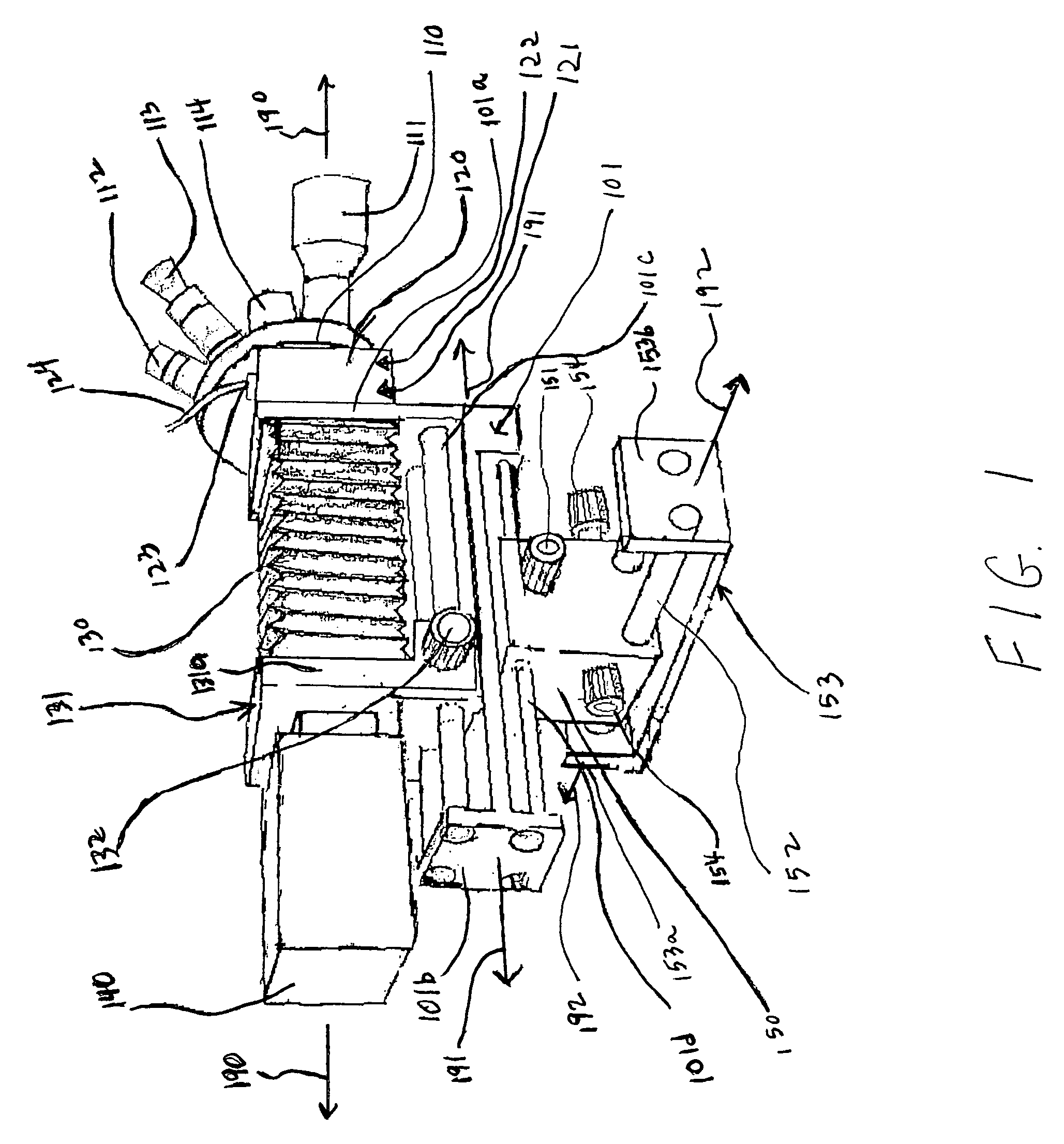Microscope with objective lens position control apparatus
a position control apparatus and microscope technology, applied in the field of microscopes, can solve the problems of inability to transport liquid, inability to carry a liquid, and inability to perform field visits to a distant location, so as to increase the sensitivity of specimen observation, facilitate transportation, and facilitate the effect of portable microscopes
- Summary
- Abstract
- Description
- Claims
- Application Information
AI Technical Summary
Benefits of technology
Problems solved by technology
Method used
Image
Examples
Embodiment Construction
[0018]FIG. 1 is a perspective view of a microscope 100 according to an embodiment of the invention. Four objective lenses 111, 112, 113 and 114 are mounted on a turret 110. Though the microscope 100 illustrated in FIG. 1 (and FIG. 2, described below) includes four objective lenses, generally a microscope according to the invention can include any number of objective lenses (i.e., one, two or more objective lenses). An objective lens of a microscope according to the invention can be attached to a turret (or other support structure) of the microscope using any of a variety of appropriate techniques and / or apparatus, as can be readily appreciated by those skilled in the art. For example, an objective lens of a microscope according to the invention can be constructed with a base having a threaded section that screws into a corresponding threaded hole of a turret or other support structure of the microscope (see, e.g., the objective lens 500 illustrated in FIG. 5 and described below). In...
PUM
 Login to View More
Login to View More Abstract
Description
Claims
Application Information
 Login to View More
Login to View More - R&D
- Intellectual Property
- Life Sciences
- Materials
- Tech Scout
- Unparalleled Data Quality
- Higher Quality Content
- 60% Fewer Hallucinations
Browse by: Latest US Patents, China's latest patents, Technical Efficacy Thesaurus, Application Domain, Technology Topic, Popular Technical Reports.
© 2025 PatSnap. All rights reserved.Legal|Privacy policy|Modern Slavery Act Transparency Statement|Sitemap|About US| Contact US: help@patsnap.com



